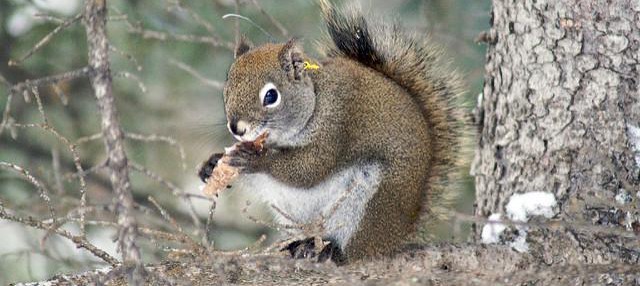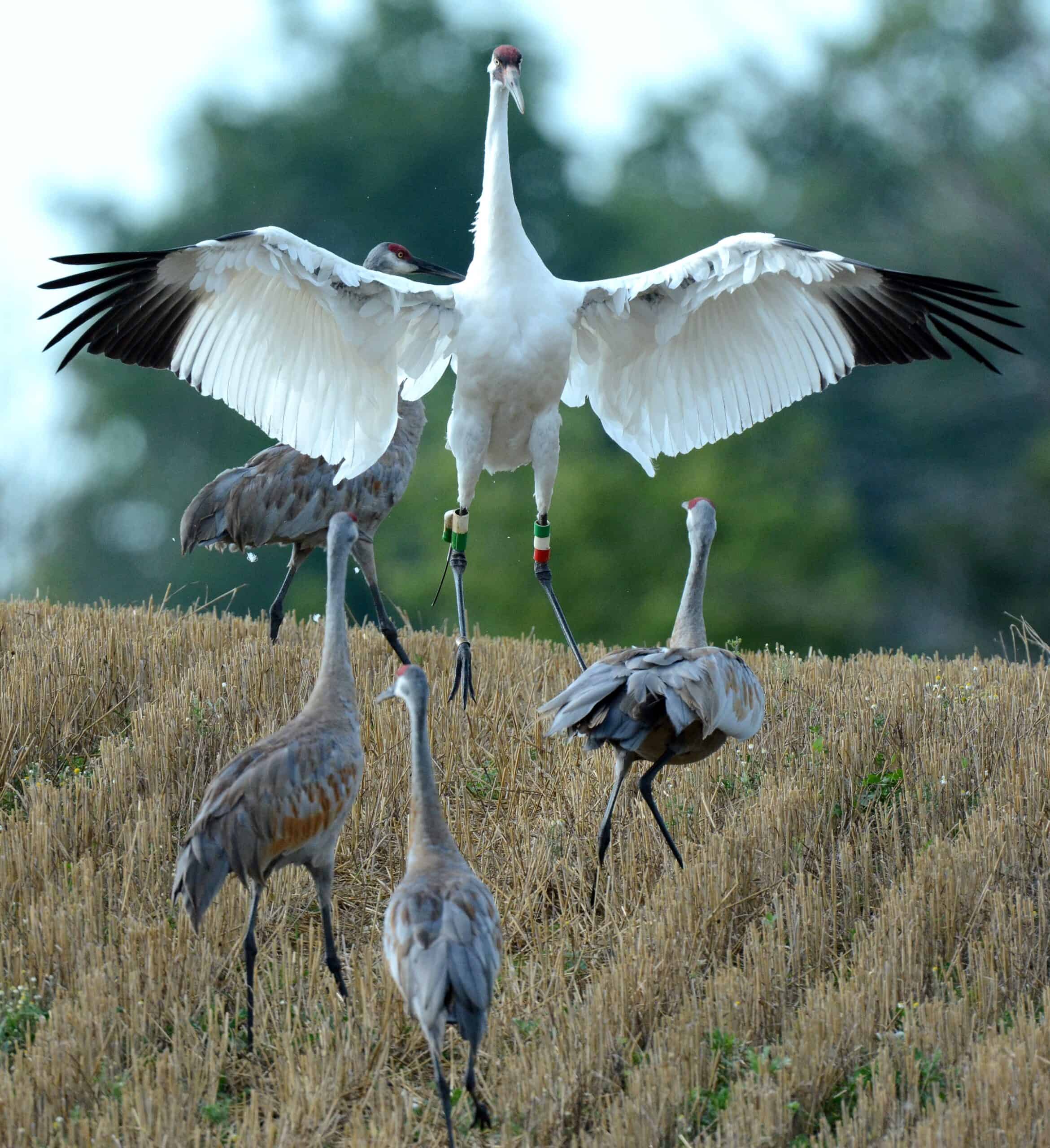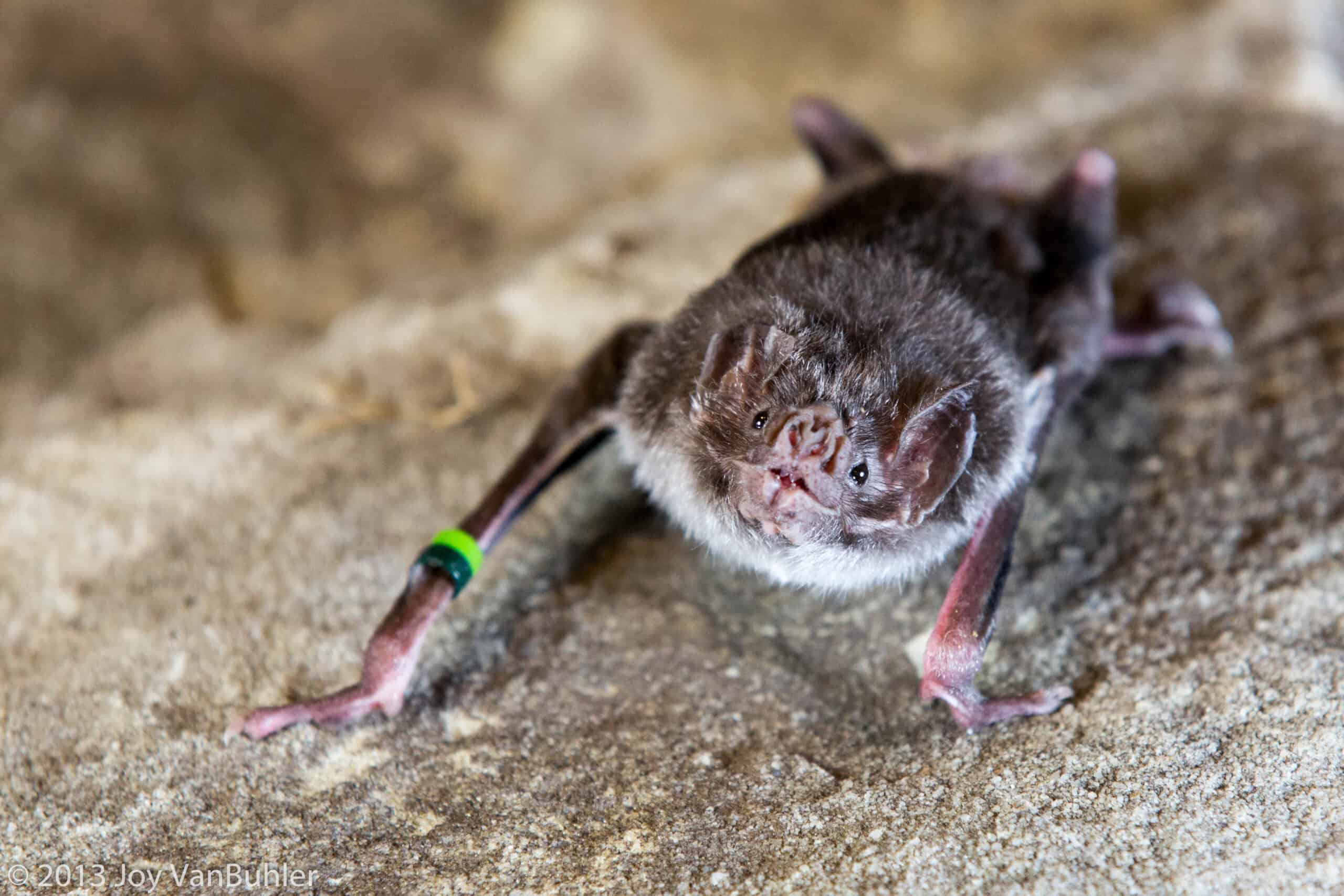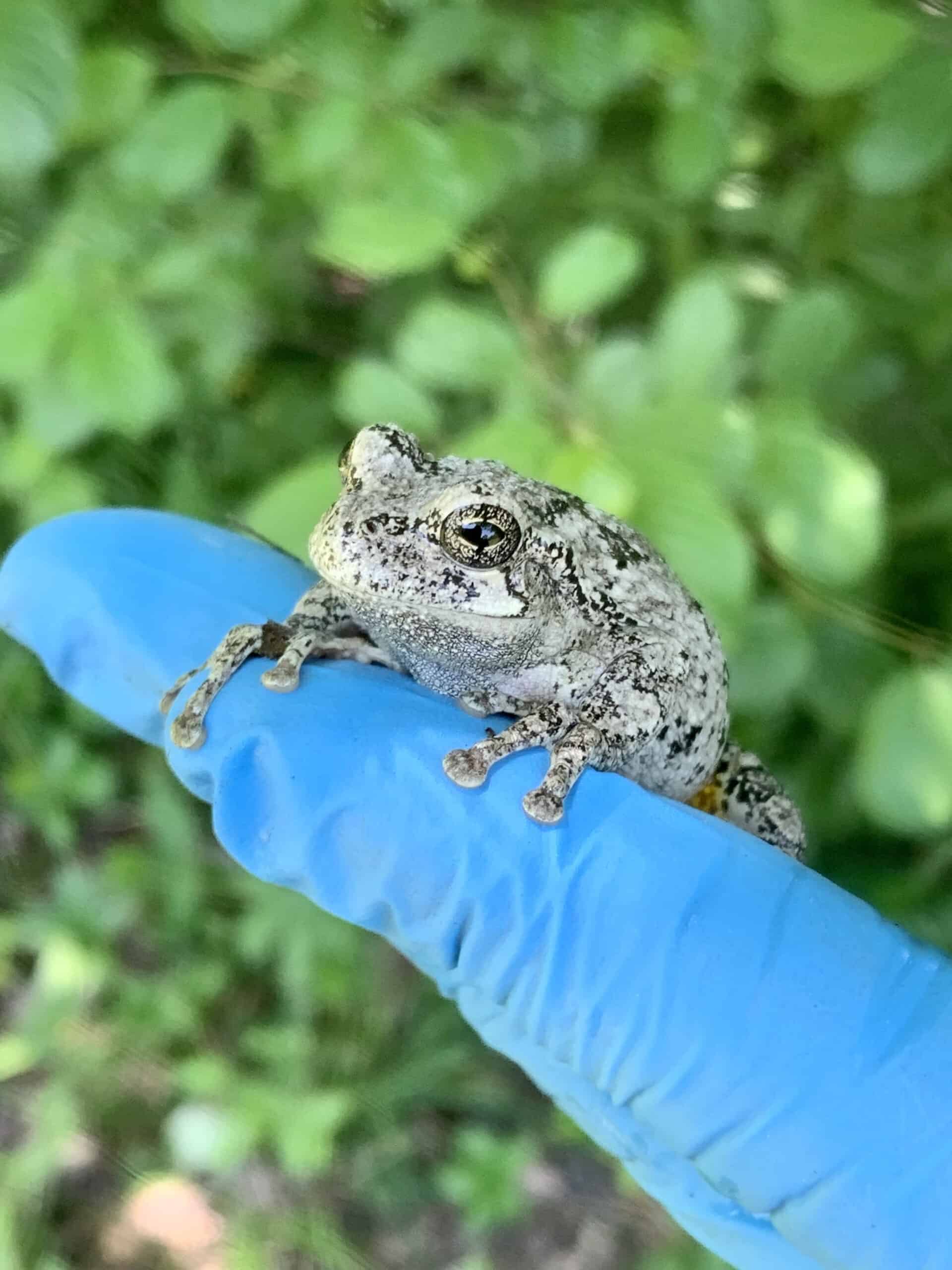Share this article
Found middens give squirrels a helping hand
To survive amid spruce trees, where cone production comes and goes from year to year, North American red squirrels (Tamiasciurus hudsonicus) put away cones during boom years to have something to eat during bust years. They defend these middens from their neighbors, storing cones away in cool, moist ground to keep the seeds fresh.
These stores of cones can last several years, so when squirrels die, others can inherit their stashes. But not all inheritances are equal, researchers discovered.
“This opened up an interesting possibility that it might really matter who the previous owner was in terms of how many cones were inherited,” said Andrew McAdam, an associate professor at the University of Guelph and an author of the study published in Ecology Letters.
With lead author David Fisher, a former University of Guelph postdoctoral researcher, McAdam looked at which squirrels occupied which middens and when each squirrel died.
The team looked at spatially explicit data over the past 30 years to map every individual in the population that lived and died in a territory in the Yukon. Over the past six years, the team also collected data on how many cones were stored in each squirrel’s midden.
McAdam and his colleagues found males and squirrels in their prime, around 3 or 4 years old, had the biggest middens. “What this means is that, if you happen to settle on a territory previously owned by a male or prime-aged squirrel that happened to die in the best of their life, you fall into this tub of butter and inherit all these resources,” he said.
McAdam said squirrels are unique because they leave behind this extension of resources, whereas other species like bison (Bison bison), which store energy as body fat, can’t leave it behind when they die.
But McAdam said they have no evidence that squirrels were actively searching for middens previously owned by males and prime-age squirrels. It appeared to be just a matter of luck. “We suspect one of the reasons for that is because the probability of getting a territory is really quite low,” he said. “Sixty-five percent of squirrels won’t get a territory at all and just die.”
McAdam said this study can help evolutionary biologists understand more about which animals may contribute genes to the next generation and how individuals are influenced by their genes and experiences. The attributes of one squirrel, including its midden size, can influence not only its fitness but the fitness of the next squirrel that comes along, he said.
“Most of the motivation for studying squirrels comes from trying to understand fundamental biological processes, so the squirrels are the tool we try to use to understand biology,” he said. “But if you study them long enough, you do fall in love with them.”
Header Image: North American red squirrels stash away cones to eat later. Researchers recently found that if a midden becomes abandoned, another squirrel may take over and benefit. ©Ryan Taylor








